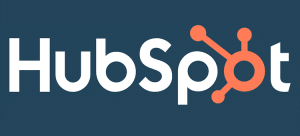In the rapidly evolving digital landscape of the 21st century, Information Technology Service Management (ITSM) has emerged as a critical component in various sectors, especially in education. This blog post delves into the significance of ITSM in enhancing IT support for students and faculty in educational institutions. Drawing on various methods and sources, we’ll explore how effective ITSM can revolutionize the educational experience.
Background and Context: The Evolution and Challenges of IT Services in Education
The landscape of IT services in educational institutions has undergone significant changes over the past few decades. Initially, technology in education was a supplementary tool, often limited to computer labs and essential administrative functions. However, as technology advanced, its role in education expanded dramatically, leading to services like Essaypay and platforms where students can request “do my assignment” assistance.
Today, IT encompasses various services, from digital classrooms and online learning platforms to sophisticated data management systems and advanced research tools.
1. Challenges in Meeting the Growing Demand
This evolution has not been without its challenges. The demand for robust and responsive IT support has grown as educational institutions increasingly rely on technology.
Students and faculty now require continuous access to various IT services for multiple activities, including learning, teaching, research, and administration. Yet, many institutions need help to keep pace with these demands, often due to outdated systems, limited resources, and a lack of specialized IT support staff.
2. Student Challenges with Inadequate
For students, inadequate IT support can manifest in several ways: difficulties accessing online learning resources, issues with software compatibility, and a lack of timely technical assistance. These challenges can hinder their learning experience, affect their academic performance, and lead to frustration and disenchantment with the institution’s technological capabilities.
3. Faculty Challenges with Inadequate
Faculty members face similar issues, with inadequate IT support impacting their teaching and research work. The introduction of IT help desk support services can address challenges such as unreliable network connections, inefficient management of digital resources, and insufficient training on new IT tools, which can significantly impede their ability to deliver quality education and engage in cutting-edge research.
4. The Crucial Role of IT Service Management in Education
Therefore, the growing need for effective IT Service Management (ITSM) in education is evident. ITSM, which focuses on aligning IT services with the institution’s and its stakeholders’ needs, is crucial in addressing these challenges.
Effective ITSM can ensure that IT resources are utilized efficiently, support services are responsive and user-friendly, and technological advancements are seamlessly integrated into the educational framework.
5. The Future of ITSM in Enhancing Educational Experiences
As the dependency on technology in education continues to grow, the role of ITSM becomes increasingly vital. It’s not just about fixing technical issues; it’s about creating an IT environment that supports and enhances the educational experience for all.
By recognizing and addressing the current challenges, academic institutions can leverage ITSM to meet and exceed the expectations of their students and faculty, paving the way for a more interconnected and technologically adept educational landscape.
Principles of IT Management in Education
Information Technology Service Management (ITSM) encompasses a range of practices and principles to deliver effective IT services. Two of the most prominent frameworks in ITSM are ITIL (Information Technology Infrastructure Library) and COBIT (Control Objectives for Information and Related Technologies).
ITIL is a widely accepted approach to ITSM, providing a detailed set of practices for IT service management that focuses on aligning IT services with the needs of businesses. It emphasizes a process-based approach, covering service strategy, design, transition, operation, and continual service improvement.
COBIT, on the other hand, offers a more comprehensive framework that integrates business goals with IT processes. It’s mainly focused on governance and management of enterprise IT, ensuring risk management, resource optimization, and value delivery from IT investments.
Principles and Best Practices in ITSM
The core principles of ITSM revolve around delivering value, managing risk, optimizing resources, and continual improvement. These principles are built upon a foundation of best practices such as:
- Service Strategy and Design: Understanding and aligning IT services with institutional goals.
- Service Transition: Ensuring that changes to services are managed in a controlled manner.
- Service Operation: Efficiently and effectively delivering and supporting services.
- Continual Service Improvement: Regularly evaluating and improving the service delivery process.
These principles are complemented by proactive problem management, incident management, and robust service level agreements, all geared towards enhancing the quality and reliability of IT services.
Relevance of ITSM Principles to Educational Settings
In educational settings, the application of ITSM principles is particularly relevant. Learning institutions increasingly rely on technology for diverse purposes, from online learning platforms to administrative operations.
Adopting ITSM frameworks like ITIL and COBIT can help educational institutions align their IT services with academic and administrative goals. By implementing these principles, schools and universities can ensure that their IT infrastructure supports and enhances the educational experience.
For instance, effective service strategy and design can lead to more integrated learning platforms, while robust service operation practices can ensure minimal downtime and disruptions.
Continual service improvement is vital in education, where the landscape of technology and learning methods is constantly evolving. By regularly assessing and upgrading their IT services, educational institutions can stay at the forefront of technological advancements, ensuring that students and faculty have access to the best possible tools and resources.
ITSM Implementation in Education
Implementing Information Technology Service Management (ITSM) in educational settings is a critical step towards enhancing the efficiency and effectiveness of IT services. This process often involves adapting established ITSM frameworks to meet the unique needs of educational environments.
1. Case Studies of Successful ITSM Implementation
One notable example of successful ITSM implementation is at a large university where ITIL principles were integrated to streamline IT services. The university faced challenges in managing various IT requirements from multiple departments.
By adopting ITIL’s service strategy and service design principles, they were able to develop a more structured approach to IT service delivery. This led to improved response times, better management of IT resources, and increased satisfaction among students and faculty.
Another case study involves a community college that implemented COBIT to improve governance and management of IT. The college used COBIT to align its IT processes with its educational goals, ensuring better control and efficient use of IT resources. This alignment enhanced data security, improved IT infrastructure, and more effective online and in-class learning support.
2. Strategies for Adapting ITSM Frameworks
Adapting ITSM frameworks like ITIL and COBIT to the unique environment of educational institutions involves several strategies:
- Understanding Specific Needs: Conducting thorough assessments to understand the specific IT needs of students, faculty, and administrative staff.
- Customizing IT Services: Tailoring IT services to support various educational processes, including learning management systems, research databases, and administrative operations.
- Fostering Collaboration: Encouraging collaboration between IT departments and other stakeholders to ensure services are aligned with educational goals.
3. Role of IT Support Staff and Administrators
The role of IT support staff and administrators is crucial in the successful implementation of ITSM in educational settings. IT support staff are responsible for day-to-day IT services management, ensuring they are accessible, reliable, and effective. They are crucial in incident management, problem resolution, and service quality.
Administrators, on the other hand, have a strategic role. They are responsible for aligning ITSM implementation with institutional objectives, ensuring compliance with educational standards and policies, and overseeing the overall IT governance structure. Their leadership in driving the ITSM initiative is critical for its success and sustainability.
Enhancing Student Experience through ITSM
Implementing Information Technology Service Management (ITSM) in educational institutions is pivotal in enhancing the student experience. By leveraging the right tools and technologies and focusing on student-centric initiatives, ITSM can significantly improve students’ access to IT resources, positively impacting their learning outcomes and overall satisfaction.
1. Tools and Technologies Improving Student Access to IT Resources
Integrating advanced IT tools and technologies is fundamental in providing students seamless access to educational resources. Cloud-based services, for instance, allow students to access learning materials and resources from anywhere, at any time. This ensures that students can engage with their coursework and collaborate with peers and instructors, irrespective of physical boundaries.
Learning Management Systems (LMS) like Canvas or Blackboard are another essential IT resource. These platforms provide an organized online space where students can find course materials, submit assignments, participate in discussions, and receive feedback.
When managed effectively through ITSM, these systems can significantly enhance the learning experience by providing a reliable and user-friendly interface. Additionally, using collaborative tools such as Microsoft Teams or Google Workspace facilitates group projects and communication, making it easier for students to collaborate remotely.
2. Impact of Efficient ITSM on Learning Outcomes and Student Satisfaction
Efficient ITSM directly impacts learning outcomes and student satisfaction by ensuring that IT resources are reliable, accessible, and up-to-date. A well-implemented ITSM strategy minimizes downtime, swiftly resolves technical issues, and keeps systems updated with the latest features and security measures.
This reliability fosters a more conducive learning environment, enabling students to focus on their studies without the disruption of technical glitches.
Furthermore, ITSM practices that prioritize user experience, such as providing 24/7 technical support and user-friendly interfaces, significantly enhance student satisfaction. When students feel supported by their institution’s IT services, it can lead to higher engagement levels and, subsequently, better academic performance.
3. Examples of Student-Centric ITSM Initiatives
Several educational institutions have launched student-centric ITSM initiatives with notable success. For example, a university may implement a virtual IT help desk specifically designed to assist students with technical queries outside standard hours, acknowledging the varied schedules of their student body.
Another initiative could be the provision of on-campus IT support kiosks, where students can receive immediate assistance with hardware or software issues.
Some institutions also focus on personalized IT training sessions for students, helping them maximize the available IT tools and resources. These sessions can be tailored to different skill levels and learning styles, ensuring that all students can benefit, regardless of their prior IT knowledge.
Supporting Faculty with ITSM
The successful implementation of Information Technology Service Management (ITSM) in educational institutions significantly impacts the faculty by providing robust solutions for research, teaching, and administrative tasks. Institutions can substantially enhance faculty productivity and engagement by deploying tailored ITSM solutions and collaborative tools.
1. ITSM Solutions for Research, Teaching, and Administrative Tasks
ITSM offers a range of solutions that are particularly beneficial for faculty members engaged in research, teaching, and administrative duties.
For research, ITSM can facilitate access to high-performance computing resources, specialized software, and secure data storage solutions, which are crucial for data-intensive research projects. Effective ITSM ensures that these resources are available and reliably maintained and supported.
In terms of teaching, ITSM solutions can streamline the integration and management of digital learning environments, such as Learning Management Systems (LMS). This integration can include providing tools for creating and distributing digital content, tracking student progress, and facilitating online assessments.
For administrative tasks, ITSM can improve the efficiency of processes through automated systems for student data management, financial planning, and human resources tasks, thereby reducing the administrative burden on faculty.
2. Collaborative Tools and Services to Enhance Faculty Productivity and Engagement
Collaborative tools and services are integral components of ITSM that significantly boost faculty productivity and engagement. Platforms like Microsoft Teams or Slack can facilitate seamless communication and collaboration among faculty members, allowing for efficient sharing of resources, ideas, and best practices.
Additionally, cloud-based document-sharing platforms like Google Drive or Dropbox promote easy access to and management of shared teaching materials and research documents.
These tools enhance productivity and encourage a more collaborative and interconnected academic environment, which fosters innovation and shared learning among faculty members.
Case Examples of Faculty-Focused ITSM Improvements
Several institutions have successfully implemented faculty-focused ITSM improvements. For instance, a university might develop a custom research portal consolidating access to research databases, funding opportunities, and publication platforms. This integrated approach streamlines the research process, making it easier for faculty to access and utilize critical resources.
Another example includes a college implementing an automated course and classroom scheduling system. By using ITSM principles to manage and automate these tasks, the college significantly reduced the time faculty spent on administrative duties, allowing them to focus more on teaching and research.
Furthermore, some institutions have introduced faculty training programs to help them effectively utilize IT tools and resources. These programs are designed to keep faculty abreast of the latest technological developments and ensure they are comfortable and proficient in using various IT systems and applications in their daily tasks.
Challenges and Solutions in ITSM for Education
Implementing Information Technology Service Management (ITSM) in educational institutions comes with its own set of challenges. However, understanding these obstacles and devising strategic solutions can pave the way for more effective and future-ready ITSM in education.
1. Common Obstacles in Implementing ITSM
One of the primary challenges is the resistance to change. Faculty and staff accustomed to traditional methods may hesitate to adopt new IT practices. Budget constraints often pose a significant hurdle, as implementing and maintaining ITSM frameworks can require substantial financial resources.
Another common obstacle is the need for IT expertise within the institution. Many educational organizations may need in-house skills to implement and manage ITSM effectively. Moreover, the diverse needs of various stakeholders (students, faculty, administrators) make it challenging to develop a one-size-fits-all ITSM solution.
2. Strategies to Overcome These Challenges
Institutions should focus on change management strategies to overcome resistance to change, including comprehensive training and support for faculty and staff. This approach involves clear communication about the benefits of ITSM and how it will enhance the educational and administrative processes.
Addressing budget constraints requires creative financial planning, such as seeking grants, partnerships, or other funding opportunities. Institutions can also consider phased ITSM implementations, starting with the most critical areas to manage costs effectively.
Developing IT expertise can be approached by investing in staff training or hiring specialized IT personnel. Collaborations with IT service providers and leveraging cloud-based solutions can supplement in-house capabilities.
3. Future Trends and Potential Solutions in ITSM for Education
The integration of AI and automation in ITSM holds significant promise. These technologies can streamline repetitive tasks, provide better analytics for decision-making, and enhance the overall efficiency of IT services.
Another emerging trend is the use of predictive analytics in ITSM. By analyzing data trends, educational institutions can anticipate and mitigate potential IT issues before they impact users, leading to a more proactive IT service approach.
In cybersecurity, adopting more sophisticated security measures within ITSM is essential. As educational institutions increasingly become targets for cyber threats, robust security practices integrated into ITSM will be crucial.
The Impact of ITSM on Institutional Efficiency and Effectiveness
Implementing Information Technology Service Management (ITSM) in educational institutions significantly influences operational efficiency and effectiveness. An efficient ITSM streamlines IT operations and positively impacts these institutions’ overall functioning and academic quality.
1. Broader Impacts of Efficient ITSM on Institutional Operations
Efficient ITSM brings a structured approach to managing IT resources, which is crucial for smooth institutional operations. It ensures that IT services are aligned with the institution’s goals, leading to better resource allocation and management.
For example, effective ITSM can reduce downtime and system failures, leading to uninterrupted access to critical educational resources and administrative systems. This reliability is crucial in maintaining operational continuity and efficiency.
Moreover, ITSM practices like asset management and predictive maintenance can lead to significant cost savings, allowing institutions to allocate funds to other critical areas like research and development. Efficient ITSM also involves automating routine tasks, freeing staff time for more value-added activities, and enhancing overall productivity.
2. Relationship Between ITSM and Educational Quality
The quality of education is deeply intertwined with the effectiveness of IT services. ITSM directly impacts the delivery of educational content, accessibility of learning materials, and the integration of innovative teaching methods.
For instance, a robust IT infrastructure managed through ITSM ensures that online learning platforms are reliable and user-friendly, directly enhancing the learning experience.
Additionally, ITSM supports faculty and researchers by providing them with the necessary tools and resources, thus enriching the quality of teaching and research. This support can manifest in better access to digital libraries, efficient research data management, and enhanced collaboration tools.
3. Metrics and Methods for Assessing the Impact of ITSM in Education
To gauge the impact of ITSM, several metrics and assessment methods can be employed. These include:
- User Satisfaction Surveys: Regular surveys among students and faculty can provide insights into how effectively IT services meet their needs.
- Service Uptime and Reliability Metrics: Tracking the uptime of crucial IT services and the frequency of outages can indicate the reliability of the IT infrastructure.
- Response Time and Resolution Metrics: Monitoring the average time taken to respond to and resolve IT issues can help assess the efficiency of IT support services.
- Cost-Benefit Analysis: Evaluating the cost savings and value generated from ITSM practices can provide a financial perspective on its effectiveness.
- Innovation and Adaptation Measures: Assessing the institution’s ability to integrate new technologies and adapt to changing educational needs can indicate the dynamic nature of the ITSM strategy.
Conclusion
In conclusion, IT Service Management (ITSM) in Education stands as a cornerstone in the advancement of modern educational institutions. By navigating through the challenges and effectively implementing ITSM frameworks like ITIL and COBIT, these institutions have enhanced their IT infrastructure and significantly elevated the quality of education and operational efficiency.
The journey from mere technological aids to integrated IT ecosystems shows the transformative impact of ITSM, addressing the varied needs of students and faculty alike. This evolution highlights the critical role of ITSM in resolving technical issues and crafting an IT environment that actively supports and enriches the educational experience.
The future of ITSM in education looks toward integrating emerging technologies like AI and predictive analytics, promising an even more dynamic, secure, and student-faculty-centric IT landscape.
The continuous improvement and adaptation of ITSM practices will undoubtedly play a pivotal role in shaping the future of education, ensuring institutions are well-equipped to meet the ever-evolving technological and educational demands.







